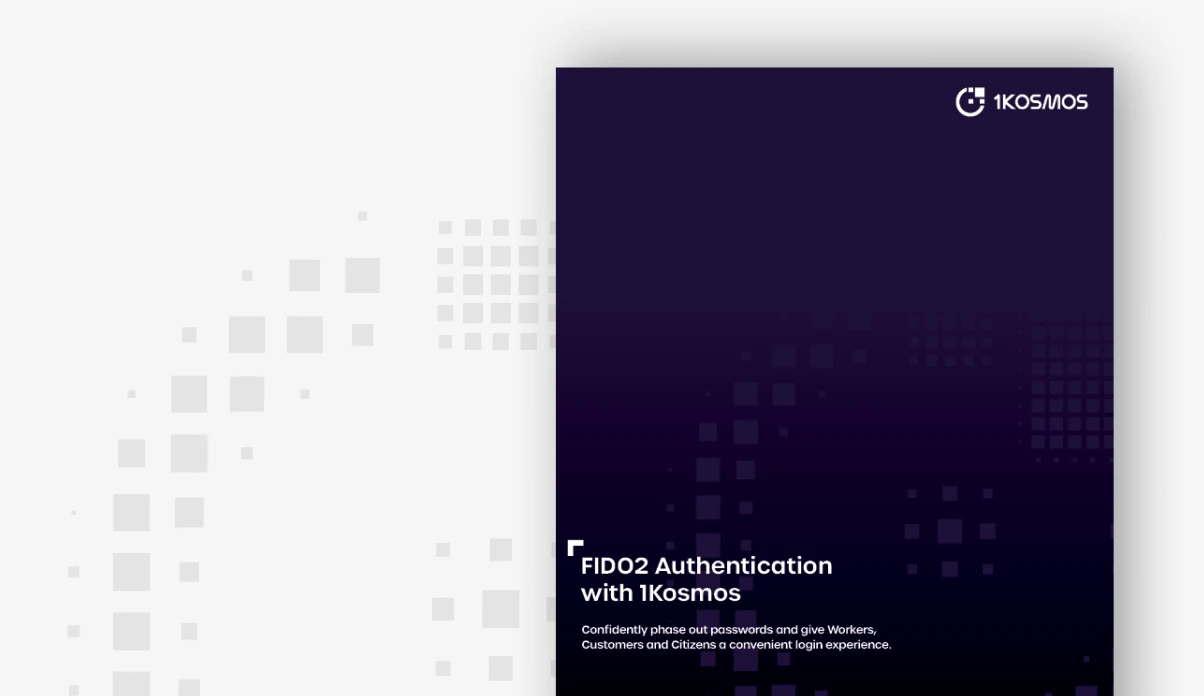Building a Customer First Approach to Identity Based Authentication
Transitioning From Password Based Authentication to Identity Based Authentication
Passwords really aren’t the problem. It’s anonymous users hiding behind compromised credentials that represent one of the weakest links in cyber security.
This is what we discuss in our webinar with Mike Engle (CSO of 1Kosmos) and John Tolbert (Lead Analyst and Managing Director of KuppingerCole).
They discuss how organizations can take their first step towards passwordless authentication powered by strong biometrics to improve security for their employees, customers, and citizens.
We know that authenticating workers, citizens, and customers logins with passwords is risky. As you might have noticed, this has led to a stream of recent breaches, and countless others before, including the Aramco data leak, Microsoft espionage attack, Colonial Pipeline attack, and SolarWinds attack.
Overall, the business impact of these breaches is devastating, with the average ransomware payment reaching almost $1.5 million and the average cost of business interruption from ransomware topping $5 million.
Layering on two-factor authentication (2FA), those pesky one time codes sent via email or SMS adds a trust signal, but complicates the user experience and, importantly, still doesn’t prove the identity of the user.
The unsettling truth with passwords and replacements that are not identity-proofed: we are running on hope … hope that passwords are confidential and the people using them are who they claim to be.
Why Replace Passwords With Identity?
Individuals assume that their online engagement is secure and government and industry entities are enforcing regulations to protect privacy. They want to seamlessly access online services and be easily recognized without being treated like cybercriminals. Whether they are functioning as a customer, citizen, or worker, they want the same convenient experience.
A recent report by KuppingerCole calls out the need for organizations to safely exchange digital identities of their employees and customers. They call this an “Identity Fabric” which unifies IAM and CIAM to enable safe and simple connection to services “on-premise, in the cloud, with partners, and in hybrid environments for employees, partners, and customers”.
To do this, many organizations are looking to add multi-factor authentication or to replace passwords altogether with biometric logins. The problem with both is that they fail to address the core issue: Is the person accessing digital services who they claim to be?
1Kosmos Marries Identity Proofing and Authentication
The 1Kosmos platform ensures that individuals are who they claim to be by using an identity-based approach to authentication. We bring worker, citizen, and customer identity into the security perimeter so that organizations know with certainty who is accessing IT assets and online services.
This means we have a quick and convenient way for users to self verify their identity using government, telco, and banking credentials. Then, once verified, workers, citizens, and customers use their digital identity to be utilized at login or transaction approval. This provides users with a frictionless experience and organizations with a high level of assurance for the identity on the other side of the digital connection.
By adding identity as a key pillar to network security, we help CISOs regain control of their IT services from anonymous users hiding behind compromised logins. With identity based authentication, organizations will no longer be held hostage to data breach, ransomware, and financial fraud perpetrated via identity deception.
Are you interested in learning more? John Tolbert and Mike Engle will dig much deeper to explore the consumerization of the authentication experience and the consolidation of the IAM and CIAM infrastructure to help improve security while reducing the complexity of IAM/CIAM IT infrastructure.
They’ll discuss why this is much more than simply a shift to biometric authentication and explain what this shift means for your employees, your users, and your existing IT investments.
